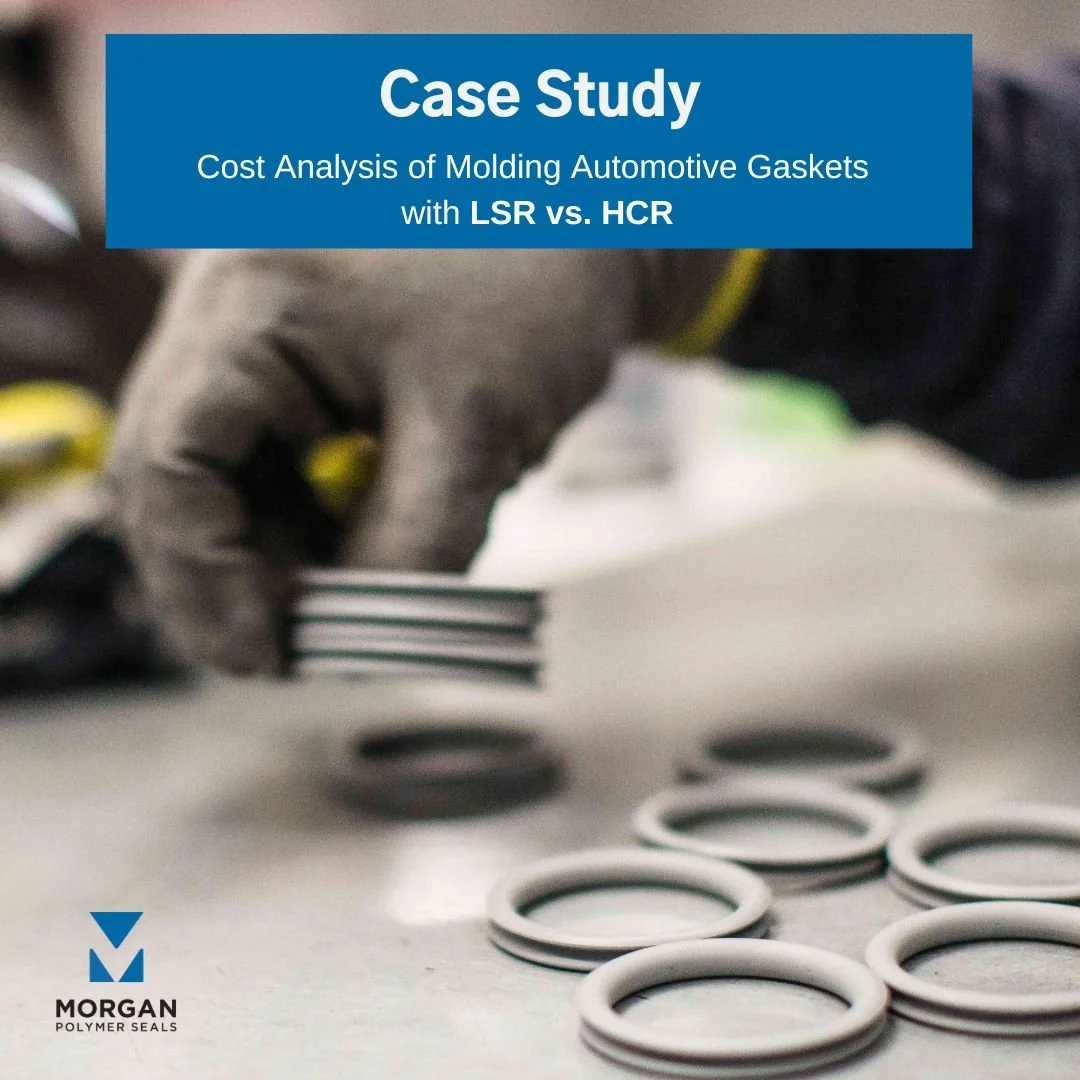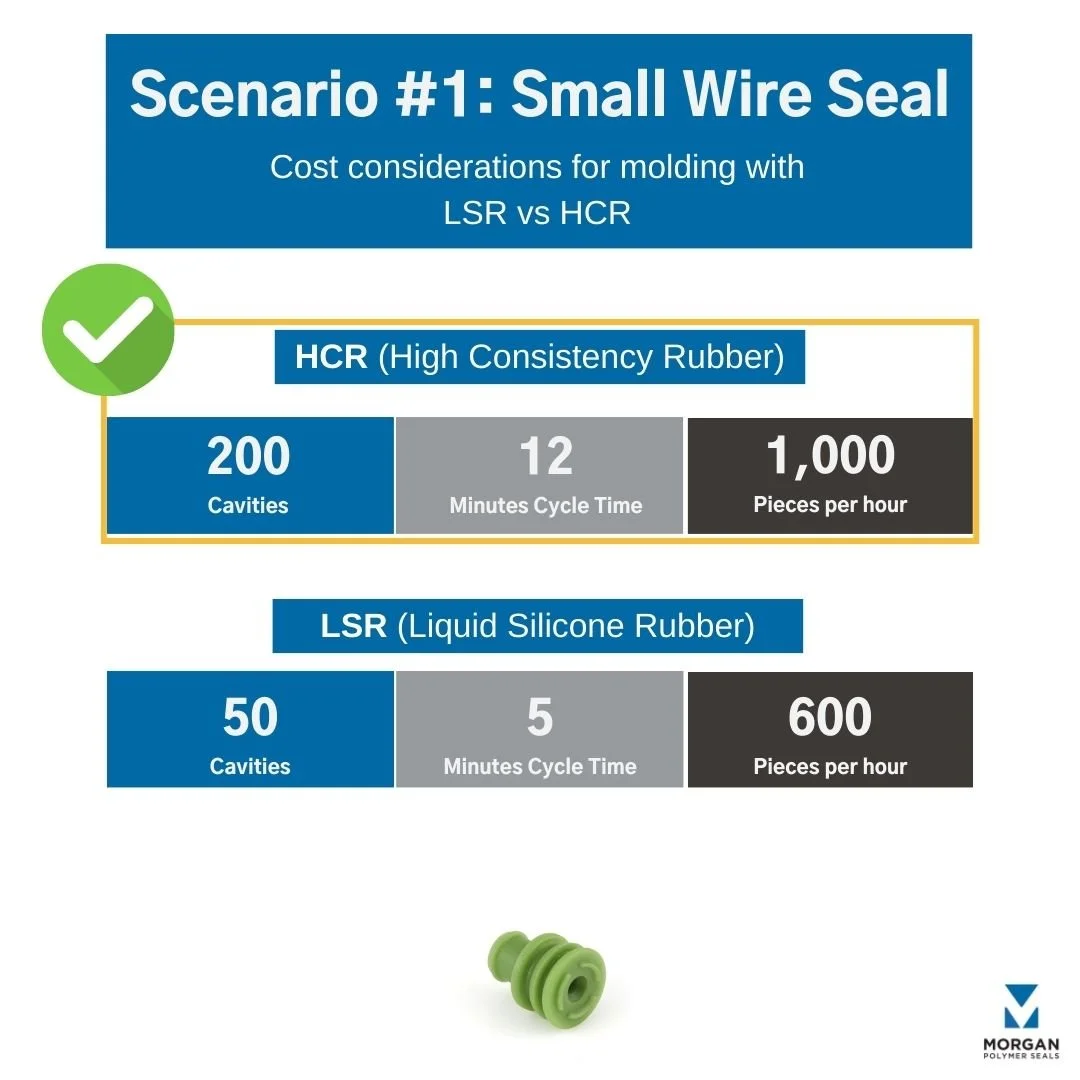Case Study: Cost Analysis of Molding Automotive Gaskets with LSR vs. HCR
As molding experts, our customers often rely on us to determine the optimal molding material and manufacturing method for their automotive gasket programs. And often with electrical connectors, we are choosing between Liquid Silicone Rubber (LSR) and High Consistency Rubber (HCR). Both materials have distinct processing characteristics that influence production costs, so let’s look at a real-life scenario to illustrate how we might approach these critical manufacturing decisions.
Scenario #1: Small Wire Seal
Scenario 1: From a costing standpoint, HCR might be preferred
Scenario 1 HCR Process:
Press Size: Small
Cavities: 200
Cycle Time: 12 minutes (5 cycles/hour)
Output: 1,000 pieces/hour
Scenario 1 LSR Process:
Press Size: Large (higher cost)
Additional Runners: Required for temperature management (additional cost)
Cavities: 50
Cycle Time: 5 minutes (12 cycles/hour)
Output: 600 pieces/hour
In this scenario, the HCR process is more favorable for the small wire seals. Despite the longer cycle time, the higher number of cavities and lower material and tooling costs result in greater overall efficiency and cost savings.
Scenario #2: Larger Peripheral Seal
Scenario 2: From a costing standpoint, LSR might be preferred
Scenario 2 HCR Process:
Press Size: Large (higher cost)
Cavities: 75
Cycle Time: 15 minutes (4 cycles/hour)
Output: 300 pieces/hour
Scenario 2 LSR Process:
Press Size: Large (higher cost)
Cavities: 30
Cycle Time: 5 minutes (12 cycles/hour)
Output: 360 pieces/hour
In this case, the LSR process shows an advantage despite fewer cavities. The shorter cycle time allows for a higher production rate, which balances out the higher material and tooling costs, making LSR a viable option.
These are just two *simplified* scenarios that illustrate how we might approach the LSR vs. HCR question for automotive gaskets.
In other scenarios with even larger / thinner parts, the benefits of LSR become even more apparent. Additionally, for specialty silicones such as Flame Resistant variants, the cost difference between HCR and LSR is smaller, making LSR even more favorable for such applications.
For more about LSR vs HCR, check out this article about the material characteristics that make each material distinctive.
Do you have a program you’d like us to help with? Click the contact button below and we’ll reply right away.



